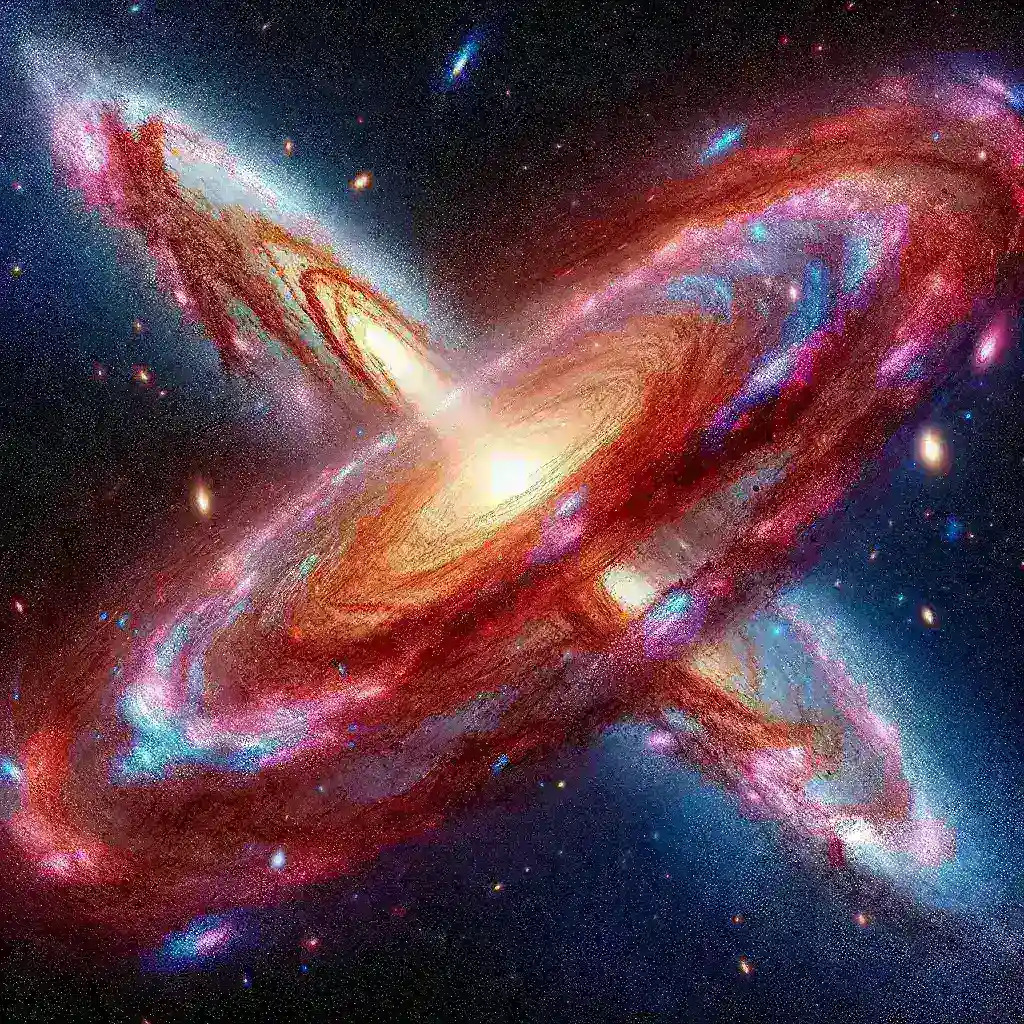AI Predictive Models Simulating Future Milky Way Andromeda Galaxy Collision
Introduction
The cosmos is a vast expanse filled with mysteries and wonders that continue to captivate the human imagination. Among these cosmic phenomena, the impending collision between the Milky Way and Andromeda galaxies stands out, not only for its scale but also for its implications on our understanding of galactic dynamics. In this article, we will explore how AI predictive models are being used to simulate this monumental event, shedding light on the future of our galaxy and its neighboring Andromeda.
The Milky Way and Andromeda: A Cosmic Collision Course
The Milky Way, our home galaxy, is a barred spiral galaxy that houses billions of stars, including our Sun. Andromeda, on the other hand, is the closest spiral galaxy to us, located approximately 2.537 million light-years away. Current astronomical studies predict that these two giants will collide in about 4.5 billion years.
This future collision is not just a random event; it is the result of gravitational forces at play. The Milky Way and Andromeda are on a collision course due to the attraction of their massive gravitational fields, and their eventual merger will reshape both galaxies dramatically.
The Role of AI in Galactic Simulations
Traditionally, simulating such large-scale cosmic events was a daunting task reserved for supercomputers. However, the advent of artificial intelligence has transformed this landscape. AI predictive models help researchers to not only simulate past galactic interactions but also forecast future collisions with unprecedented accuracy.
How AI Models Work
AI models use a variety of techniques, including machine learning and deep learning, to analyze vast amounts of data generated by telescopes and space missions. These models can identify patterns in the motion of stars and gas within galaxies, allowing scientists to predict how galaxies will interact over time.
Data Input and Processing
- Observational Data: Astronomers gather data from various sources, including telescopes that observe different wavelengths of light.
- Simulation Data: Existing simulations provide a baseline for understanding how galaxies interact and evolve.
- Machine Learning Algorithms: These algorithms process the data, identifying correlations and making predictions about future interactions.
Improving Accuracy Over Time
As more data becomes available, AI models can improve their predictive capabilities. They can learn from past predictions, refining their algorithms to enhance accuracy. This iterative learning process is crucial for simulating complex events like galactic collisions.
Historical Context of Galactic Studies
The study of galaxies has long fascinated astronomers. The first observations of the Andromeda galaxy date back to ancient civilizations, but it wasn’t until the 20th century that we began to understand the true scale of our universe. Edwin Hubble’s discoveries in the 1920s provided evidence that Andromeda is a separate galaxy and not a nebula within the Milky Way.
Galactic Mergers in History
Galactic collisions are not rare occurrences; they have played a significant role in shaping the universe we see today. The Milky Way itself has merged with various smaller galaxies over its lifetime. Understanding these past events helps scientists model future collisions.
Future Predictions and Implications
Simulating the Milky Way-Andromeda collision offers insights into what our galaxy might look like post-collision. Predictions suggest that the merger will lead to the formation of a new galaxy, often referred to as Milkomeda or Milkdromeda.
Potential Outcomes
- Star Formation: The interaction between the two galaxies will compress gas clouds, leading to new star formation. This could result in a burst of star creation, lighting up the night sky.
- Black Hole Dynamics: Each galaxy hosts a supermassive black hole at its center. Their collision may lead to a series of complex interactions and potentially the merging of these black holes.
- Galactic Restructuring: The gravitational forces at play will alter the structure of both galaxies, leading to the formation of new star systems and possibly altering the orbits of existing stars.
Challenges in Simulation
Despite advancements, simulating such grand events comes with challenges. The sheer scale and number of variables involved make it difficult to achieve complete accuracy. Factors such as dark matter, which has a profound effect on gravitational forces, must also be considered.
Limitations of Current Models
- Data Gaps: Our understanding is limited by the data available, which may not capture every nuance of galactic dynamics.
- Computational Power: Even with AI, the computational resources required for such simulations are immense.
- Understanding Dark Matter: As dark matter’s properties are not fully understood, its effects remain difficult to quantify.
The Cultural Relevance of Galactic Collisions
The concept of galaxies colliding has captured the human imagination, influencing literature, art, and popular culture. Films, novels, and documentaries have explored the themes of cosmic disaster and rebirth in imaginative ways, reflecting our fascination with the universe.
Impact on Art and Literature
Artists and writers have often portrayed cosmic events as metaphors for human experience. The collision of galaxies can symbolize transformation, chaos, and renewal, resonating with audiences across generations.
Expert Insights
Experts in the field of astrophysics continue to study the Milky Way-Andromeda collision, providing valuable insights into its implications. Dr. Sarah Thompson, an astrophysicist at the Cosmic Research Institute, states, “Understanding our galaxy’s future is critical for comprehending our place in the universe. AI predictive models offer a glimpse into a cosmic event that will shape the fate of our galaxy.”
Conclusion
The impending collision between the Milky Way and Andromeda galaxies is not just a scientific curiosity; it is a profound event that highlights the dynamic nature of our universe. Through AI predictive models, we can simulate this colossal interaction, gaining insights into our galaxy’s future. As we continue to advance our understanding of cosmic events, we are reminded of the beauty and complexity of the universe we inhabit. The fate of our galaxy may be billions of years away, but the journey to understand it starts now.

